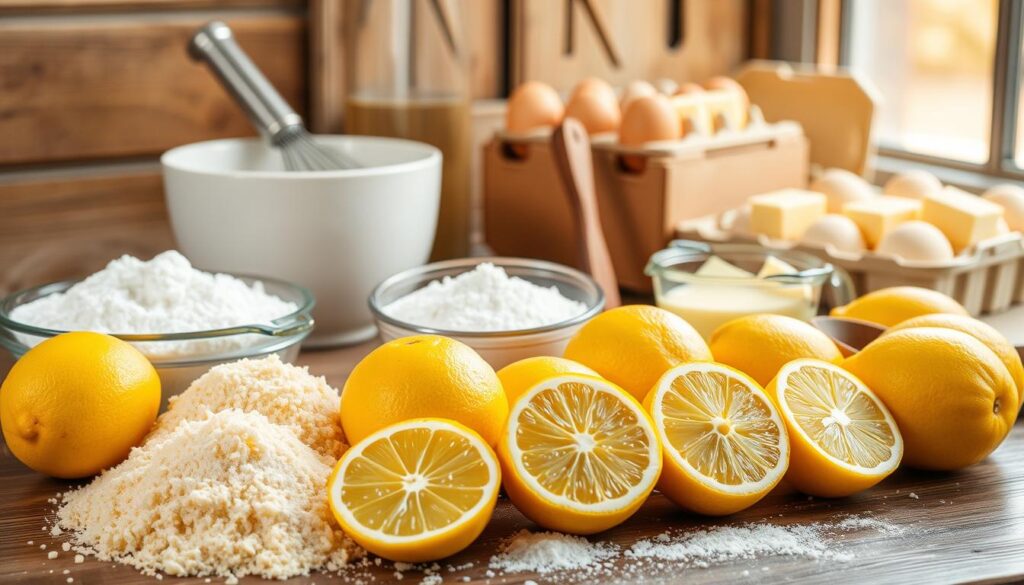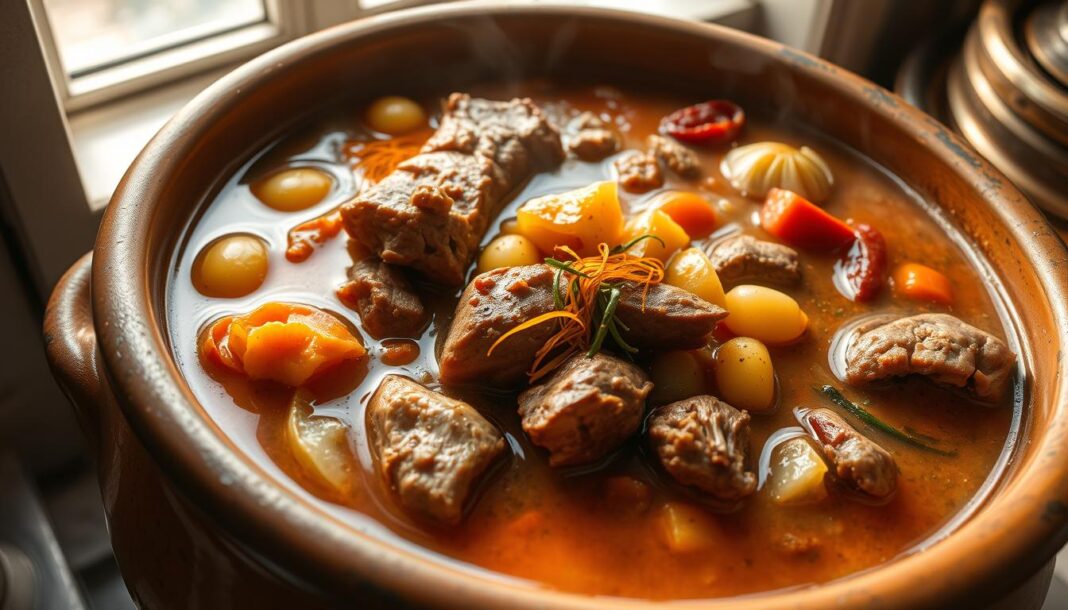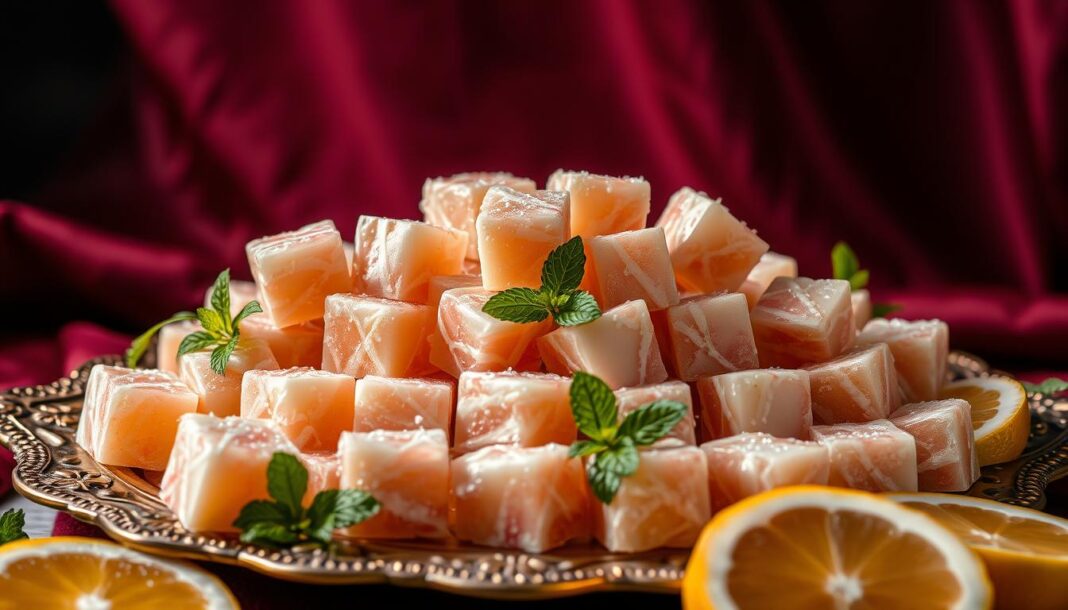We love a good lemon cake, and understanding the science behind it can elevate our baking. The perfect lemoncake is a masterclass in balance – the right mix of lemon flavor, moisture, and texture. To achieve this, we need to explore the chemical reactions that occur during the baking process.
The balance of acidity from lemons interacts with other ingredients to create that distinctive tangy flavor and light texture. By understanding the intricacies of cake recipes, we can create bakery-quality treats with consistent results.
Key Takeaways
- Understanding the science behind lemon flavor and texture.
- The importance of balancing acidity in cake recipes.
- Tips for achieving the perfect lemon cake texture.
- How to apply chemical reactions to your baking.
- Creating consistent results with your recipe.
The Rich History of Lemoncakes Through the Ages
The history of lemoncakes is a rich tapestry woven through centuries, reflecting changing tastes and cultural influences. As we delve into their past, we find that lemoncakes have not only been a staple in various cultures but have also symbolized different values over time.

From Medieval Treats to Modern Favorites
Lemoncakes have evolved significantly from their medieval origins, where they were considered a luxury due to the rarity and expense of lemons. As trade routes expanded and lemons became more accessible, lemon cakes transitioned from being exclusive treats for the wealthy to beloved desserts for the masses. Over time, recipes for lemoncakes have been refined, incorporating new ingredients and techniques while maintaining their essence.
Lemoncakes in Popular Culture
The appearance of lemoncakes in popular culture, particularly in Game of Thrones, where they’re depicted as Sansa Stark’s favorite treat, has further cemented their place in contemporary food culture. This portrayal not only highlights the dessert’s appeal but also underscores its symbolic significance, representing a longing for a more refined and sophisticated lifestyle. The connection between lemoncakes and Game of Thrones has sparked interest in traditional recipes and inspired new variations, bridging historical culinary practices with modern pop culture phenomena.
The Science of Perfect Lemoncakes
Lemoncakes owe their delightful texture and flavor to the complex chemical processes that occur during baking. To create the perfect lemoncake, we must understand the interactions between its key ingredients.
How Acids and Leavening Agents Interact
The reaction between lemon juice (an acid) and baking powder is crucial. When these two ingredients combine, they produce carbon dioxide bubbles, giving lemoncakes their light and fluffy texture. This chemical reaction is the foundation of a well-risen cake.
- The acid in lemon juice reacts with baking powder to produce CO2.
- This reaction contributes to the cake’s light texture.
The Role of Fats and Proteins in Texture
The protein structure in flour creates the framework for your cake. Meanwhile, fat (from butter or oil) coats these proteins, limiting gluten development and resulting in a tender crumb. Sugar also plays a role by competing with flour for liquid, thus tenderizing the cake further. Moreover, the process of creaming fat (butter) and sugar incorporates air pockets that expand during baking, enhancing the cake’s texture.

- Protein in flour provides structure.
- Fat limits gluten development for a tender crumb.
- The Maillard reaction during baking adds flavor and color.
Essential Ingredients for Traditional Lemoncakes
The foundation of a delicious lemoncake lies in its essential ingredients. To achieve that perfect balance of flavor and texture, we need to carefully select each component.
Selecting the Best Lemons for Flavor
When it comes to lemons, the quality of the fruit directly impacts the flavor of our cake. We recommend using organic, unwaxed lemons to avoid any unwanted chemical residues. When zesting the lemons, use a fine grater and only grate the top yellow part to avoid the bitter white pith. For the best flavor, use freshly squeezed lemon juice instead of bottled juice.
Flour, Sugar, and Butter: Quality Matters
The type of flour used can significantly affect the texture of our lemoncake. Understanding the difference between all-purpose flour, cake flour, and flour mixture with cornstarch is crucial. Additionally, the quality of butter used can enhance or detract from the overall flavor. European-style or cultured butter can add a richness to our cake.
Leavening Agents and Their Effects
The balance of leavening agents like baking powder and baking soda must be precisely calibrated with the acidity of lemon juice to ensure proper rise without any metallic aftertaste. Adding a pinch of salt can also enhance the flavors and help control the zest‘s bitterness.
| Ingredient | Importance | Tips |
|---|---|---|
| Lemons | Provides flavor and aroma | Use organic, unwaxed for zesting and juicing |
| Flour Mixture | Affects texture and structure | Choose between all-purpose, cake flour, or a mixture with cornstarch |
| Butter | Enhances flavor and texture | Use European-style or cultured for richness |

Kitchen Tools for Baking Perfect Lemoncakes

To achieve lemoncake perfection, having the right kitchen tools is essential. The precision and efficiency that come with using the appropriate equipment can make a significant difference in the outcome of your baked goods.
Essential Mixing and Measuring Equipment
Accurate measurements are crucial in baking. Digital kitchen scales ensure that ingredients are measured consistently, which is vital for achieving the perfect balance of flavors and textures in your lemoncake. Additionally, a stand mixer can greatly simplify the process of creaming butter and sugar, a critical step in creating a light and fluffy texture.
Baking Pans and Preparation Materials
The choice of baking pan can affect the baking time, crust formation, and overall texture of your lemoncake. For instance, a loaf pan from a reputable brand can provide even baking and easy cake release. Using parchment paper as a pan liner not only prevents the cake from sticking but also makes removal and cleanup easier, protecting the delicate crust of your lemoncake.
Specialized tools like a citrus zester and lemon squeezer can significantly improve both the process and results of your lemoncake baking. A citrus zester helps to zest the rind without including the pith, while a lemon squeezer makes it easy to extract juice from lemons and limes.
Step-by-Step Lemoncake Preparation
With the right ingredients and a bit of know-how, you can create a mouth-watering lemoncake by following our step-by-step guide. The key to a successful cake lies in the preparation and mixing process.
Preparing Your Ingredients and Workspace
Before you begin, it’s crucial to have all your ingredients ready and your workspace organized. This process, known as mise en place, ensures that you can focus on mixing and baking without interruptions. Bringing your ingredients to room temperature is also vital, as cold eggs or butter can affect the final texture of your cake.
To start, measure out 2 cups of flour, 1 tsp of baking powder, and 1 tsp of salt, and have them ready along with the lemon zest.
Mixing the Perfect Lemoncake Batter
To mix the batter, begin by creaming the butter and sugar together until pale and fluffy, about 4-6 minutes. This step is crucial for incorporating air pockets that will make your cake light and fluffy. Next, add eggs one at a time, beating well after each addition, followed by the vanilla extract and lemon juice.
The alternating addition method is key to preventing gluten development and ensuring a tender crumb. Alternate between adding the flour mixture and buttermilk, beginning and ending with the flour mixture, and mix until just combined.
Baking Techniques for Moist Results
To achieve a moist cake, proper oven temperature and baking time are critical. Ensure your oven is preheated to the correct temperature and bake the cake on the middle rack to promote even rising.
Test for doneness by inserting a toothpick into the center of the cake; if it comes out clean, the cake is ready. Avoid overbaking, as this can result in a dry cake.
Creating Delicious Lemoncake Glazes and Frostings
The finishing touches on your lemoncake involve more than just a simple drizzle – it’s about creating a glaze or frosting that enhances the cake’s flavor. A well-crafted glaze or frosting can elevate your lemoncake, adding an extra layer of flavor and moisture.
We explore the science behind the perfect lemon glaze, understanding how the ratio of fresh lemon juice to powdered sugar affects both consistency and flavor intensity. A classic lemon glaze is made by mixing together lemon juice and sugar in a medium bowl, then carefully drizzling it over the top of each cake.
Classic Lemon Glaze Recipe
To make a simple yet delicious glaze, combine 2 tbsp of lemon juice with 1 cup of powdered sugar. Adjust the consistency by adding more lemon juice or sugar to achieve your desired thickness. This glaze is perfect for drizzling over warm or cooled lemoncakes.
| Ingredient | Quantity | Purpose |
|---|---|---|
| Powdered Sugar | 1 cup | Provides sweetness and structure |
| Fresh Lemon Juice | 2 tbsp | Adds flavor and adjusts consistency |
Cream Cheese Frosting for Lemoncakes
For a richer topping, we recommend a cream-based frosting. By beating cream cheese with butter and powdered sugar, you create a smooth, tangy frosting that complements the lemon flavor without overpowering it.
Candied Lemon Decorations
Candied lemon slices make a beautiful and delicious decoration for your lemoncakes. To create them, slice lemons thinly using a mandolin or sharp knife, then simmer the slices in a simple syrup made from sugar and water for 15 minutes. This process not only cooks the lemons through but also infuses them with sweetness.
By mastering these glazes, frostings, and decorations, you can take your lemoncake baking to the next level, ensuring that your creations are not only delicious but also visually appealing.
Troubleshooting Common Lemoncake Problems
The pursuit of the perfect lemoncake is often hindered by avoidable mistakes. In our experience, even small errors in technique or ingredient ratios can lead to disappointing results. Fortunately, by understanding the causes of these issues, we can provide practical solutions to help you achieve the moist, flavorful lemoncakes you’re looking for.
Preventing Dry or Dense Cakes
One of the most common problems with lemoncakes is dryness or denseness. This can often be attributed to overbaking—sometimes by just a few minutes—which dramatically affects the moisture content. To avoid this, it’s crucial to properly test for doneness. Using a toothpick inserted into the center of the cake is a reliable method; if it comes out clean or with a few moist crumbs, the cake is done. Additionally, ensuring that your ingredients are at room temperature can help in achieving a tender crumb.
Fixing Sunken Centers and Uneven Rising
Sunken centers and uneven rising can be caused by oven temperature variations. To mitigate this, it’s essential to understand your oven’s quirks and adjust baking times and temperatures accordingly. For instance, if your oven tends to run hot, you may need to reduce the temperature or baking time. Moreover, not overmixing the batter and ensuring that your leavening agents are fresh can help in achieving an even rise.
Balancing Lemon Flavor Without Bitterness
Achieving the perfect flavor profile in lemoncakes involves balancing lemon juice, zest, and sugar. Too much lemon can result in bitterness, while too little may leave the cake tasting bland. The key is to use high-quality lemons and to adjust the amount of juice and zest according to your taste preferences. Additionally, using the right type of sugar can help balance the acidity of the lemons.
| Issue | Cause | Solution |
|---|---|---|
| Dry or Dense Cake | Overbaking, incorrect ingredient temperature | Test for doneness, use room temperature ingredients |
| Sunken Center or Uneven Rising | Oven temperature variations, overmixing, old leavening agents | Adjust oven temperature, avoid overmixing, use fresh leavening agents |
| Unbalanced Lemon Flavor | Too much or too little lemon juice/zest, poor quality lemons | Balance lemon juice and zest, use high-quality lemons |
By addressing these common issues, you can significantly improve your lemoncake baking skills. Remember, practice makes perfect, and understanding the science behind your cake can help you make adjustments for better results. For visual guidance, here’s an example of a perfectly baked lemoncake:
Serving and Storing Your Homemade Lemoncakes
With your lemon cake freshly baked, it’s time to explore the art of serving and storing these delightful treats. Proper storage techniques vary depending on the type of frosting used. For instance, a lemon cake with cream cheese frosting should be refrigerated overnight, although it can be left at room temperature for a day.
To maintain its freshness, store your cake in an airtight container in the refrigerator and allow it to come to room temperature before serving. You can also freeze cakes for later use, making it easy to prepare ahead for special occasions or preserve leftovers.
When it comes to serving, consider traditional afternoon tea pairings or get creative with dessert plating ideas. You can even draw inspiration from popular culture, like Game of Thrones themed presentations, to make your lemon cake a memorable treat.


